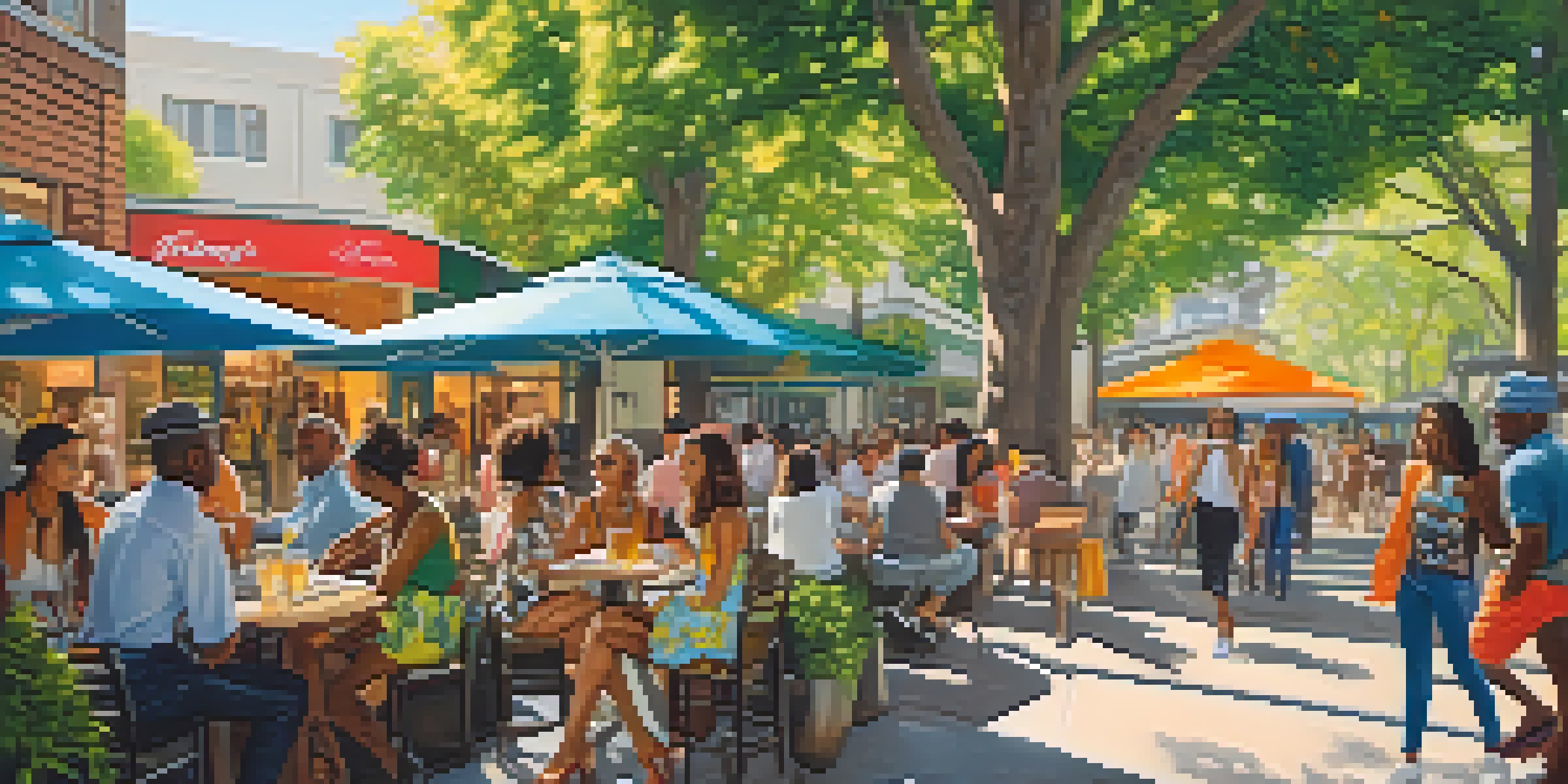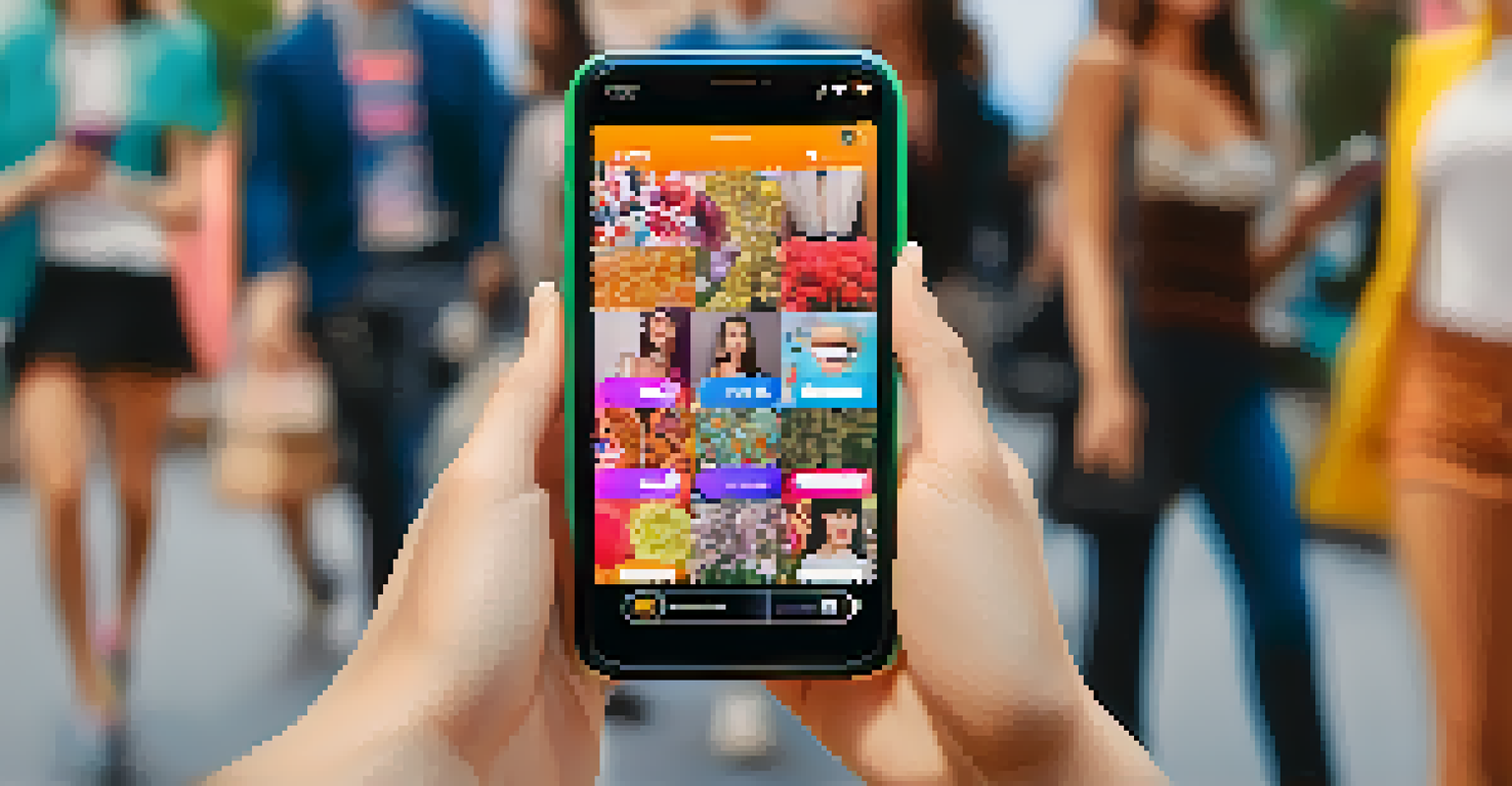How Fashion Brands Build Communities Through Social Media Platforms

Understanding the Role of Social Media in Fashion Branding
Social media has transformed the way fashion brands connect with their audience. Unlike traditional advertising, platforms like Instagram and TikTok allow for direct interaction, making brands more relatable. This two-way communication helps fashion labels understand their customers' preferences and trends in real-time.
Social media allows brands to create a personal connection with their audience, fostering a community that extends beyond traditional marketing.
For instance, many brands now share behind-the-scenes content, allowing followers to see the creative process. This transparency builds trust and fosters a sense of belonging among the audience. When followers feel involved, they are more likely to become brand advocates.
Ultimately, social media serves as a powerful tool for building community by creating a shared space for fashion lovers to engage. As brands become more accessible and relatable, they cultivate loyal fan bases that extend beyond mere transactions.
Creating Engaging Content That Resonates
To build a community, fashion brands must create content that resonates with their audience. This means understanding their interests and values, which can often be achieved through surveys or social listening. By tapping into the desires of their followers, brands can craft posts that spark conversation.

For example, a sustainable fashion brand might share stories about ethical sourcing or the artisans behind their products. This not only showcases their commitment to sustainability but also engages consumers who share similar values. Such storytelling captivates the audience and encourages them to share their own experiences.
Social Media Fosters Direct Engagement
Fashion brands use social media to interact with customers, creating a two-way communication channel that builds trust and community.
Engaging content encourages interaction, prompting followers to comment, share, or create their own posts related to the brand. This organic interaction helps in solidifying a community where members feel connected through shared interests and values.
Utilizing User-Generated Content for Authenticity
User-generated content (UGC) is a goldmine for fashion brands looking to build community. By encouraging customers to share their own photos or experiences with products, brands can create a sense of authenticity. This not only showcases real people using their products but also invites others to join in.
In the age of social media, authenticity is key. Brands must engage with their consumers genuinely to build lasting relationships.
For instance, a popular streetwear brand might host an Instagram challenge where fans post photos wearing their latest collection. This not only engages existing customers but also attracts new followers who want to participate in the fun. UGC helps brands show off their community while celebrating individual styles.
Moreover, featuring UGC on official brand channels fosters a sense of recognition and belonging among customers. When followers see their content shared, they feel valued, creating a deeper emotional connection with the brand.
Influencer Collaborations: Expanding Reach and Community
Influencer collaborations are a strategic way for fashion brands to tap into existing communities. By partnering with influencers who share similar values and aesthetics, brands can reach new audiences effectively. This collaboration often feels more personal, as influencers can authentically represent the brand to their followers.
For example, a luxury fashion label might collaborate with a micro-influencer known for their chic style. This partnership not only brings fresh eyes to the brand but also fosters a community around shared interests in fashion. Followers feel more connected when they see someone they trust endorsing a brand.
User-Generated Content Boosts Authenticity
Encouraging customers to share their experiences enhances brand authenticity and fosters a deeper emotional connection.
Additionally, these collaborations can lead to special events or campaigns that further engage the community. Whether it’s a live Q&A, a fashion show, or a giveaway, these activities encourage interaction and deepen community ties.
Building a Two-Way Communication Channel
Effective community building in fashion relies heavily on two-way communication. Brands must not only share their messages but also actively listen to their audience. This can involve responding to comments, conducting polls, or even addressing feedback publicly.
For instance, a fast-fashion brand might ask its followers to vote on new designs or colors. By involving the community in decision-making, they create a sense of ownership among their followers. This feedback loop fosters loyalty and makes customers feel valued.
Moreover, addressing concerns or questions directly shows that the brand cares about its community's opinions. This transparency helps to build trust, essential for nurturing a long-lasting relationship with customers.
Leveraging Live Events and Virtual Experiences
Live events and virtual experiences are fantastic ways for fashion brands to build community. Whether it’s a live-streamed fashion show or a virtual styling session, these events create a shared experience for followers. They allow fans to engage with the brand and each other in real-time.
For example, during a live event, brands can invite fans to comment or ask questions. This immediacy not only boosts engagement but also cultivates a sense of camaraderie among participants. Everyone feels like they are part of something bigger.
Inclusivity Strengthens Brand Loyalty
Brands that celebrate diversity attract a wider audience, fostering a sense of belonging and engagement among their community.
Additionally, hosting exclusive events for loyal customers can further solidify community bonds. These gatherings make followers feel appreciated, encouraging them to remain active participants in the brand's journey.
Fostering Inclusivity and Diversity in Brand Messaging
Inclusivity and diversity are vital in building a thriving fashion community. Brands that celebrate various identities, sizes, and styles attract a broader audience and foster a sense of belonging. When people see themselves represented, they are more likely to engage and support the brand.
For instance, a brand that features models of different ethnicities and body types in their campaigns sends a powerful message of acceptance. This representation can create an emotional connection with followers who appreciate being seen and valued.

Moreover, inclusive messaging opens the door for discussions about fashion and identity. Brands that encourage these conversations can build a community that not only supports their products but also champions broader social issues, strengthening ties among members.
Measuring Community Engagement and Growth
To understand the effectiveness of community-building efforts, fashion brands must measure engagement and growth. Metrics like likes, shares, comments, and follower growth provide insights into what resonates with the audience. Tracking these metrics helps brands refine their strategies and cater to their community's needs.
For example, if a brand notices higher engagement on posts about sustainability, it can focus more on that theme. This data-driven approach ensures that the content remains relevant and valuable to followers, enhancing their experience.
Social Media Boosts Brand Connection
Platforms like Instagram and TikTok enable fashion brands to engage directly with their audience, fostering relatability and community.
Additionally, regular feedback from the community can guide future initiatives. By actively listening and adapting to their audience, brands can create a thriving community that feels dynamic and responsive.